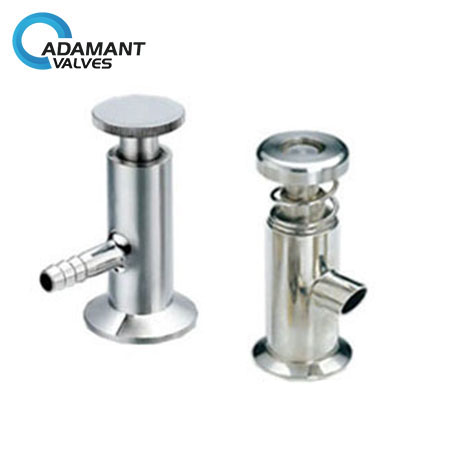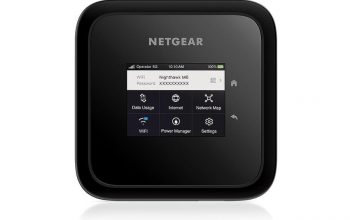
Solenoid Valves are used throughout a amount of industries, because of the valve’s versatility. Solenoid valves can be utilized with either fluid or gas applications, making them favourable among lots of manufacturers.
Solenoid valves use an electromechanical magnetic field which opens and shuts the valve, making the valve a trusted option for pneumatic and hydraulic systems.
WHAT ARE THE ADVANTAGES OF SOLENOID VALVES
Solenoid valves have a big volume of advantages, the solenoid valve has been designed and improved over the years, making the valve safer and efficient. The valve can be adapted and installed in lots of locations, making the valve versatile and adaptable to a number of applications.
Another great advantage is the procedure of the closing and opening of the valve, with the valve in a position to open and shut within less than a second. All through an automated control system, which is vital when dealing with high maintenance toxic gasses and fluids. Making the Solenoid Valve a viable option to be utilized within lots of processes and applications.
A Solenoid Valve Manufacturers is a kind of professional valve with specialized electro-mechanical controls that regulate the flow of liquids and gases. It really is a fundamental automation component owned by actuators and is also not limited to hydraulic and pneumatic uses. In this specific article, we’ll provide you with an introduction to the advantages and disadvantages of solenoid valves.
SOLENOID VALVE ADVANTAGES BREAKDOWN:
Fast response time
Low power consumption
Remote operation
Fits in a variety of machinery and applications
Cheap replacement parts
Compatible with both DC and AC voltage
Low and High-temperature usage
Safety external leakage block
Can be installed vertically or horizontally
A solenoid valve is a kind of professional valve with specialized electro-mechanical controls that regulate the flow of liquids and gases. It is a fundamental automation component belonging to actuators which is not limited to hydraulic and pneumatic uses. In this article, we’ll offer you an introduction to the benefits and drawbacks of solenoid valves.
sanitary sampling valves
As an actuator of the automated instrument, solenoid valves have seen a sharp increase in use in recent years. Below are some of the features of using solenoid valves:
1. Plugged External Leakage and Controllable Internal Leakage Provide Safer Operation
Internal and external leakage can threaten the safety of your fluid or gas processing lines and the medium that flows through them. Other self-regulating valves frequently have stem valves that extend away from the equipment, making a potential point of damage. But solenoid valves have a rotating core handled by electric, pneumatic, or hydraulic actuators, designed to solve the external leakage problem of valve stem dynamic sealing. Only solenoid valves use electromagnetic force to affect the steel core sealing in the magnet-isolation sleeve, and there’s no strong sealing, so it’s easy to block external leakage. It’s not easy to control the torque of the solenoid valve, so internal leakage is susceptible to happen – even the head of the valve stem can be pulled off. The solenoid valve’s structural form makes it easy to regulate and reduce internal leakage. Solenoid valves are exceptionally safe, and they’re well suited for mediums that are corrosive, toxic, and of high or low temperature.
2. Lightweight Responsiveness & Energy-Saving Performance
Solenoid valves have response times as short as several milliseconds. Even the pilot solenoid valve can reach a reply amount of time in the tens of milliseconds. Due to self-looping, they’re more sensitive than other self-control valves, and the coil power consumption of your well-designed solenoid valve is suprisingly low. These energy-saving products can even be configured so that only one has to trigger an action, and the valve positions are automatically kept. Plus, solenoid valves are small and lightweight, making them easy to set up and maintain.
3. Simple Operation with Easy Network Connectivity
The solenoid valve’s simple structure is simple to install and observe after compared to other types of actuators such as sanitary regulating valves. What is more significant is that the composition of the automated control system is much simpler and much more cost-effective. As electro-mechanic switch signals control the solenoid valve, it’s very convenient to hook up it to computers. In today’s world, where computer automation is widespread, the benefits of solenoid valves are even more apparent.
What are the Advantages of Solenoid Valves?
what are the features of solenoid valves
As an actuator of the automated instrument, solenoid valves have seen a sharp increase in use in recent years. Here are some of the advantages of using solenoid valves:
1. Plugged External Leakage and Controllable Internal Leakage Provide Safer Operation
Internal and external leakage can threaten the safety of your fluid or gas processing lines and the medium that flows through them. Other self-regulating valves often have stem valves that extend away from the equipment, making a potential point of damage. But solenoid valves have a rotating core managed by electric, pneumatic, or hydraulic actuators, intended to solve the external leakage problem of valve stem dynamic sealing. Only solenoid valves use electromagnetic force to affect the steel core sealing in the magnet-isolation sleeve, and there’s no strong sealing, so it’s easy to block external leakage. It’s challenging to control the torque of the solenoid valve, so internal leakage is susceptible to happen – even the top of the valve stem can be pulled off. The solenoid valve’s structural form makes it easy to regulate and reduce internal leakage. Solenoid valves are exceptionally safe, and they’re ideal for mediums that are corrosive, toxic, and of high or low temperature.
2. Lightweight Responsiveness & Energy-Saving Performance
Solenoid valves have response times as short as several milliseconds. Even the pilot solenoid valve can reach a reply time in the tens of milliseconds. Due to self-looping, they’re more sensitive than other self-control valves, and the coil power consumption of any well-designed solenoid valve is suprisingly low. These energy-saving products can be configured so that only one must trigger an action, and the valve positions are automatically kept. Plus, solenoid valves are small and lightweight, making them easy to set up and maintain.
3. Simple Operation with Easy Network Connectivity
The solenoid valve’s simple structure is easy to install and look after compared to other types of actuators such as sanitary regulating valves. What is more significant is that the composition of the computerized control system is a lot simpler plus more cost-effective. As electro-mechanic switch signals control the solenoid valve, it’s very convenient to connect it to computers. In today’s world, where computer automation is widespread, the features of solenoid valves are even more apparent.
Conclusion
In general, the solenoid valve has robust safety features, high-value performance, and a broad application range. These advantages of solenoid valves enable use in industrial control systems, where they can cooperate with different circuits to attain the desired control effects. The guaranteed accuracy and overall flexibility in performance are critical attributes which have made solenoid valves rise sharply in use over modern times. If you’re searching for a trustworthy supplier of quality solenoid valves, look no farther than Valves.
Valves is a worldwide sanitary valves manufacturer and valves supplier. It has grown to become one of the leading valves manufacturers for high precision stainless steel sanitary valves, pumps, and pipe fittings.


